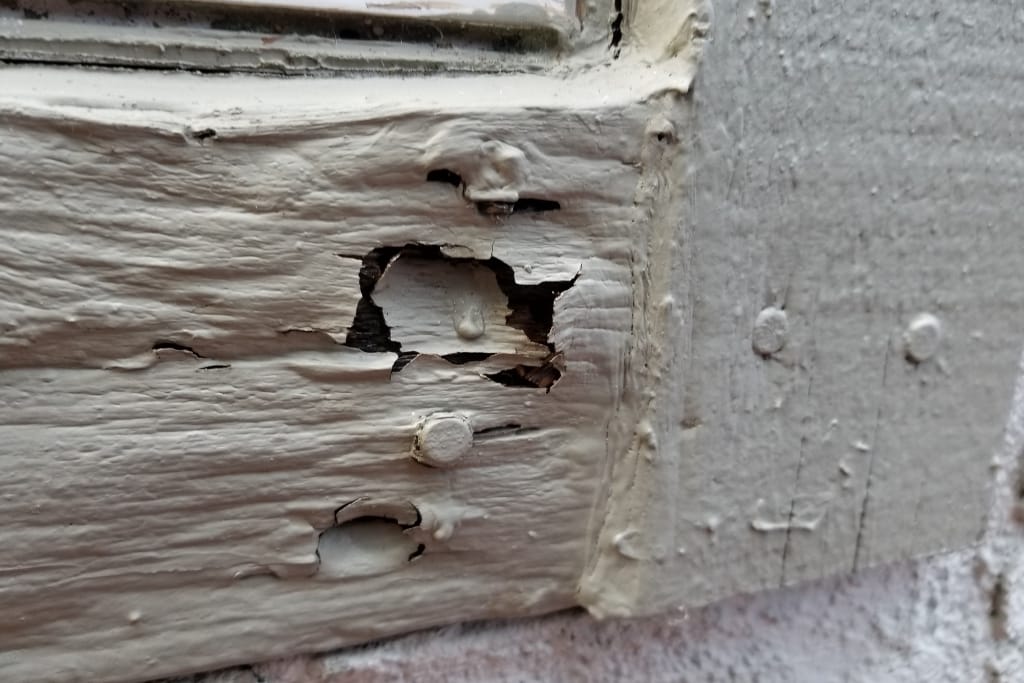Dry rot is one of the most insidious problems that can compromise the structural integrity of your home.
It occurs when a type of fungus digests the parts of the wood that give it strength and stiffness, especially under persistently damp conditions.
If left unchecked, dry rot can lead to serious damage and costly repairs. Fortunately, there are effective ways to safeguard your home against this threat.
By taking proactive measures and maintaining optimal moisture levels, you can preserve your wood structures and protect your investment.
Discover the top ten strategies to prevent dry rot and ensure your home remains safe and sound for years to come.
1)) Ensure Proper Ventilation
To effectively combat dry rot, proper ventilation is a crucial first step in maintaining a healthy environment in your home.
Ensuring that air circulates freely in areas prone to dampness, such as basements, attics, and crawl spaces, can significantly reduce moisture levels that contribute to fungal growth.
Installing vents or exhaust fans and regularly checking that they are unobstructed will help maintain a consistent airflow, preventing moisture buildup on wood surfaces.
Moreover, opening windows and using dehumidifiers can aid in balancing indoor humidity, especially in climates with high precipitation levels.
By prioritizing ventilation, you create an inhospitable environment for fungi, thus safeguarding your wooden structures against the damaging effects of dry rot.
2)) Control Indoor Humidity Levels
Regulating indoor humidity is vital when aiming to prevent dry rot, as excessive moisture provides the ideal conditions for fungal growth.
Using a hygrometer to regularly monitor the humidity levels in your home can help detect problematic areas where moisture may be accumulating.
The ideal indoor humidity should typically be between 30% and 50% to inhibit the growth of dry rot fungi.
Air conditioners and dehumidifiers can be particularly effective during humid months, helping to maintain a stable environment within the recommended range.
Addressing any leaks or seepage promptly, including those from plumbing or roofing, can mitigate unexpected spikes in humidity.
By diligently controlling indoor humidity levels, you fortify your home against the onset of dry rot, ensuring its durability and longevity.
3)) Seal Cracks And Gaps
Sealing cracks and gaps is a proactive strategy that can significantly reduce the risk of dry rot by preventing moisture from entering vulnerable areas of your home.
These openings can often be found around windows, doors, and foundations, acting as access points for water infiltration.
Applying caulking or weatherstripping to seal these gaps maintains a barrier against moisture, minimizing damp conditions that promote the growth of fungi responsible for dry rot.
It's important to conduct regular inspections to identify any new gaps that may have developed over time or as a result of settling structures.
By keeping your home's envelope intact, you effectively limit the intrusion of moisture, enhancing the resilience of wooden components and safeguarding the structural integrity of your property.
4)) Regularly Inspect Wood Structures
Regularly inspecting wood structures is a key preventative measure in the fight against dry rot.
Scheduling routine examinations of wooden elements such as beams, joists, and the exterior siding ensures that any signs of dry rot are detected early, allowing for prompt intervention.
Look for indicators like discoloration, a musty odor, or wood that feels soft or crumbles easily.
These examinations also provide an opportunity to address any minor issues, such as leaks or elevated moisture levels, before they escalate.
Consistent diligence in assessing the condition of wood structures not only curtails the development of dry rot but also preserves the overall health and safety of your home.
5)) Use Treated Wood For Construction
Opting for treated wood in construction projects presents a robust defense against dry rot.
This type of wood undergoes a special treatment process that infuses it with preservatives, enhancing its resistance to moisture and fungal decay.
Using treated wood in areas particularly susceptible to dampness, such as outdoor decks, wooden fences, or basement framing, provides an added layer of protection against the environmental conditions that exacerbate dry rot.
Treated wood also maintains its structural integrity longer under harsh weather conditions, reducing the need for frequent repairs or replacements.
Embracing treated wood in your construction plans not only fortifies your home's structures against dry rot but also contributes to the longevity and strength of your overall investment.
6)) Maintain Well-Functioning Drainage Systems
Maintaining well-functioning drainage systems is essential to safeguarding your home from the damaging effects of dry rot.
Proper drainage systems effectively channel water away from structures, preventing the accumulation of moisture near wood materials.
It is crucial to routinely inspect and clean gutters, downspouts, and drainage ditches to ensure they are free of debris which can obstruct water flow.
Correctly graded landscaping should be maintained to direct rainwater away from the foundation, reducing the risk of moisture seepage into wooden supports or flooring.
By prioritizing the upkeep of your drainage systems, you create an effective shield against moisture intrusion, thereby reducing the likelihood of dry rot developing and compromising the robustness of your home.
7)) Install Vapor Barriers
Installing vapor barriers is a valuable preventive measure against dry rot, as these barriers play a critical role in controlling moisture levels within your home's structures.
Vapor barriers, typically made from materials like polyethylene sheets, are installed in areas prone to excess moisture, such as crawl spaces and basements.
These barriers work by blocking water vapor from permeating into wooden components, effectively reducing the risk of long-term exposure to damp conditions which can lead to fungal decay.
Proper installation ensures an airtight seal, maximizing the protective benefits. Regular inspections of vapor barriers are necessary to confirm their integrity and effectiveness.
By incorporating vapor barriers in susceptible areas, you not only prevent moisture-related issues but also extend the lifespan and durability of your home's wooden features.
8)) Ensure Proper Grading Around Your Home
Proper grading around your home is vital for directing water away from the structure, significantly reducing the risk of dry rot.
This measure involves adjusting the slope of the soil around your home to ensure it slopes away, facilitating water drainage and preventing pooling around the foundation.
By averting water accumulation near wooden components, proper grading helps maintain optimal moisture levels that discourage fungal growth.
Regular assessment of the surrounding landscape is essential to identify areas where soil erosion or settlement may have altered the slope, necessitating corrective action.
By ensuring suitable grading, you effectively protect the structural integrity of your home and safeguard it against water-related deterioration.
9)) Regularly Clean And Maintain Gutters
Regularly cleaning and maintaining gutters is a crucial step in preventing the onset of dry rot within your home's wooden structures.
Gutters play a fundamental role in channeling rainwater away from your home, mitigating the risk of water seeping into the wooden components.
Over time, debris such as leaves, twigs, and dirt can accumulate in the gutters, obstructing the free flow of water.
Periodic cleaning of gutters ensures that blockages are cleared, allowing for optimal water drainage.
Furthermore, inspecting gutters for any damage or wear is essential to maintain their functionality and prevent overflow during heavy rainfall.
By diligently attending to your gutters' upkeep, you not only avert moisture buildup that can trigger dry rot but also preserve the longevity of your home's structural integrity.
10)) Address Leaks Promptly
Promptly addressing leaks is crucial in preventing dry rot and safeguarding the structural health of your home.
Leaks, whether from plumbing fixtures, roofing elements, or exterior walls, can lead to persistent moisture exposure in wooden materials if left unattended.
This moisture can create an ideal breeding ground for fungi that facilitate dry rot, compromising the durability and safety of your home's structure.
Conducting regular inspections for signs of leaks, such as water stains, damp smells, or visible drips, is essential for early detection.
Immediate repair of any leaks not only prevents water damage but also halts the progression of dry rot.
By actively addressing leaks as soon as they are discovered, you fortify your home against moisture-related decay and ensure it remains a sturdy and reliable shelter.
Conclusion
Taking proactive measures to prevent dry rot is essential in maintaining the health and value of your home.
By implementing strategies such as installing vapor barriers, ensuring proper grading, maintaining gutters, and promptly addressing leaks, you effectively shield your home from moisture-related issues.
These preventive actions not only help preserve the structural integrity of your wooden components but also extend your home's longevity.
Vigilant upkeep and regular inspections are key to catching potential threats early, allowing for remedial action before significant damage occurs.
Protecting your home from dry rot is an investment in its durability, safety, and comfort, ensuring it remains a secure and pleasant environment for years to come.
Download Our Free E-book!








